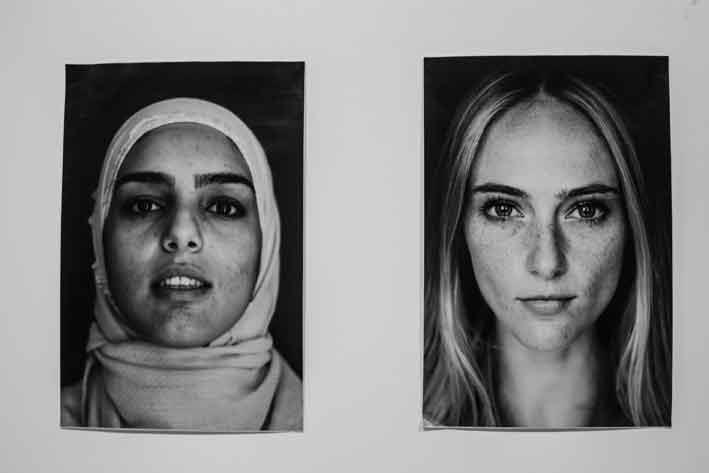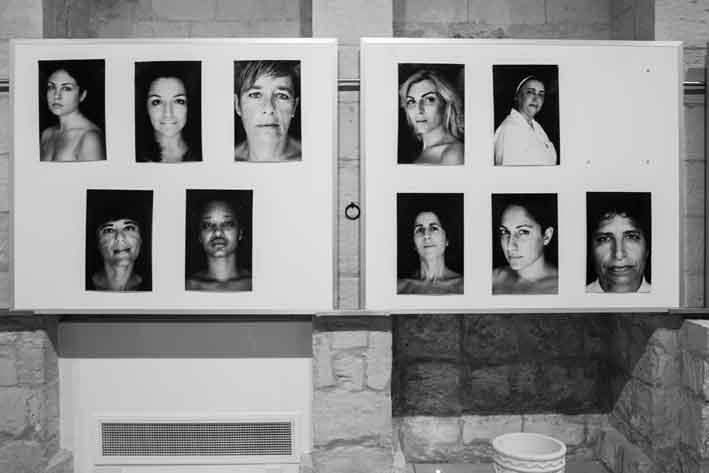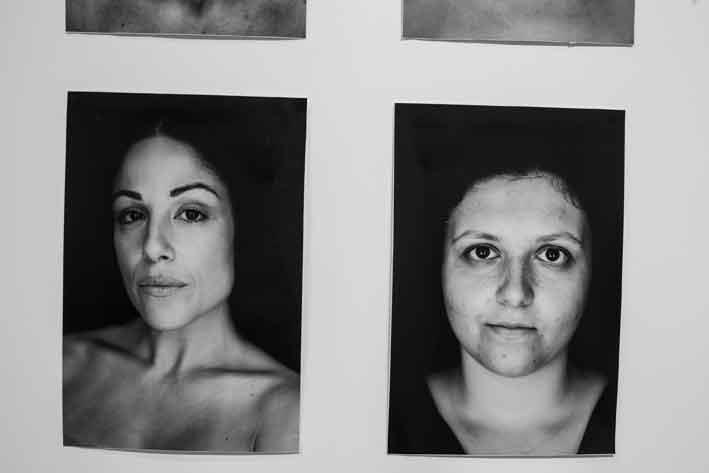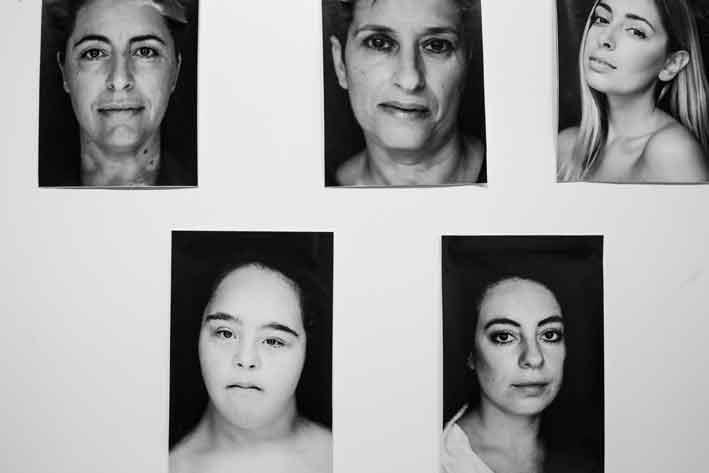You walk in the exhibition space and see a hundred faces staring back at you. Some of which are familiar, but different from the usual touched up photos that the media usually presents us with. The images are raw and stripped down. The portraits are so intimate that what one may label as ‘defects’ are visible, out in the open, not covered up. These somehow make you see the women in a different light, more vulnerable, yet strong because of this honesty, so in that way, more human.
What began as a social media campaign to promote women in leadership quickly turned into a tangible exhibition, where the faces of one hundred Maltese women are hung around San Anton Palace, close-up and raw.
The Malta Independent spoke to Samantha Pace Gasan from the Network of Young Women Leaders (NYWL) about their first project and exhibition, ‘Artemisia: 100 Remarkable Women’.
How did the idea come about and when did the selection of the 100 women start?
To ensure that NYWL develops into a sustainable NGO, we wanted to have a strategic plan for 2017, prior to going public with the NGO. This project was initially intended as a social media campaign to promote women in leadership. We wanted to promote the women who are doing fantastic work in their respective field but are barely recognised.
Eventually, Martina Caruana, the project leader, contacted Steven Levi Vella, the director ad photographer of this exhibition, and Artemisia: 100 Remarkable Women was born.
We started coming up with female role models in Malta immediately. On the top of our heads, we started mentioning the women we knew, and there were so many, so we started listing them down as we progressed with the planning of the exhibition. We also posted a call on our Facebook page and shared it through other groups for people to nominate women are phenomenal for any reason.

What were the criteria when choosing the women?
We did not have particular criteria. This is not a rank of the top 100 women in Malta and neither is it exhaustive.
There are so many women who are remarkable for one reason or another, but we could not include everyone. Truly, we are spoilt for choice. We could have had an endless list of women leaders. In fact, even after we finalised the list, we were still thinking of who could have added. These 100 are rather a sample of the remarkable women that surround us.
Furthermore, we wanted to ensure that different groups of women are represented in this project. Feminism is sometimes criticised for focusing on Caucasian, heterosexual women, but we wanted to depict the diversity within the gender as well. Thus, this project includes women with diverse cultures and ethnicities, abilities, sexualities, ages, and beliefs.

How was the ‘remarkable-ness’ of the women measured? What do they have in common?
Resilience. Hence, the capacity to recover from difficulties. These are all women who have been resilient in the face of gender-based obstacles and are leading a successful life, however subjective "successful" may be.
We know, from our personal experiences, education as well as activism, that there are structural barriers to women achieving their goals which effect women in general. So every woman who is succeeding somehow made it through all these barriers.
More than that, the testimonies presented by the participants themselves are all so individualistic, yet I’m sure that more women can relate to these stories. The expression of the various difficulties that these women encountered through their life says a lot not just about them but more about the patriarchal society that we live in.
We heard and read the stories of these women, bringing feelings of sadness, anger and even pride. The testimonials cover so many aspects, ranging from challenging subtle gender stereotypes, hate-speech, finding obstacles and lack of support for one to acquire her wishes and more traumatic experiences, such as l harassment, abuse, rape, and self-harm. We’ve heard about experiences at home, at school or in the office.
The most empowering aspect is therefore realising that these women, who are in one way or another leading a family, business, school, community or society, have been through such challenges and yet they are succeeding.

What is the message you are trying to get across through the exhibition?
The aim of the exhibition is to make women’s stories more visible and offer alternative role models to those ever-present in popular culture to young women.
I would say that this project truly presents women as vulnerable and strong human beings. Like men, we are vulnerable to the environment that surrounds us, we are all human who make mistakes, and come across other people who hurt us. Then, it is us who must be resilient to these surroundings and keep moving on, at our own pace, to reach our personal goals.
The women participating have shown to be resilient and have overcome the obstacles that society has presented them. Thus, we want to encourage young women to be their own leaders and be resilient in the face of any challenge.

Why was the choice for the photographs black and white and close-up face shots?
The photos portray the participants, and thus womanhood, in the most natural, raw, and authentic context. The close-up helps the audience focus on the expression of these women. In my opinion, the photographer managed to capture vulnerability and strength at the same time.
Black and white makes them more uniform and equal. All the women in the exhibition are different, yet equal. We live in a society where women who occupy paid employment are diminished and so are women who do not. We believe that the life that one leads should be one’s personal choice, and no one has the right to judge.
One of the reasons Artemisia was created was to provide role models for girls nowadays. What do you think about the role models which young girls are following? Do you think that nowadays young girls follow local role models or are they more likely to look at international role models as inspiration?
As Her Excellency, Marie Louise Coleiro Preca stated in during the inauguration of Artemisia: 100 remarkable women there is a crucial need for women to be visible role models in society.
By definition, a role model is a person looked to by others as an example to be imitated. These can be positive and negative role models, in the sense that some may show good examples while others may endorse in deviant behaviour. As young women leaders, we wanted to present the ones that we look up to, women who fascinate us with their life experiences, and make them more visible to other young women.

Which figures would you say are ‘ever present as role models in popular society?’ (as is written in your Facebook description)
Popular society tends to justify stereotypes against any social group, even women. Today marketing and selling seem to be more important than ethics and wellbeing of society and individuals, thus, priority is given to what sells and not what is for the betterment of our children and society.
In this context, we want to provide young women with alternative role models that have high aspirations and are reaching their goals. Thus, we want to encourage young women to be their own leaders and be resilient in the face of any challenge.
What are the careers of the women in the list? What are the careers which really stand out? What are some of the most inspiring stories?
I think the best part of the project is that we did not focus solely on women who are already in our mainstream media, but also showcased women who are not in the public eye.
Our list includes artists, singers, entrepreneurs, students, educators, academics, activists, politicians, mothers, a nun, an engineer, designers, journalists, CEOs and managers, doctors, lawyers, and more.
All of these women have different, inspiring stories. I recommend that one finds some time to visit the exhibition itself and have the chance to listen to these stories in a quiet space.